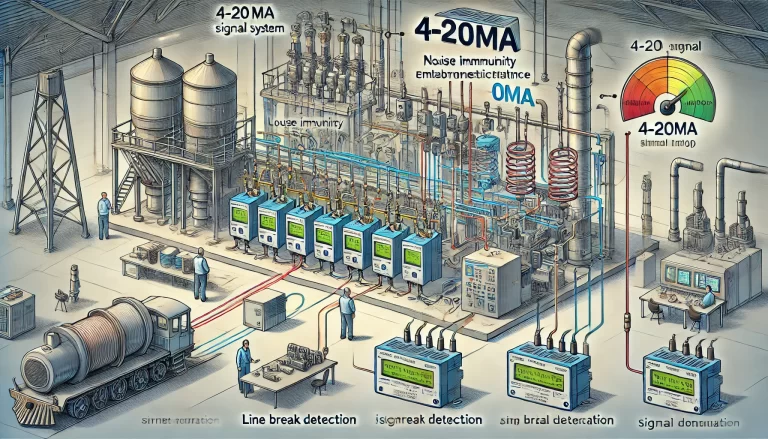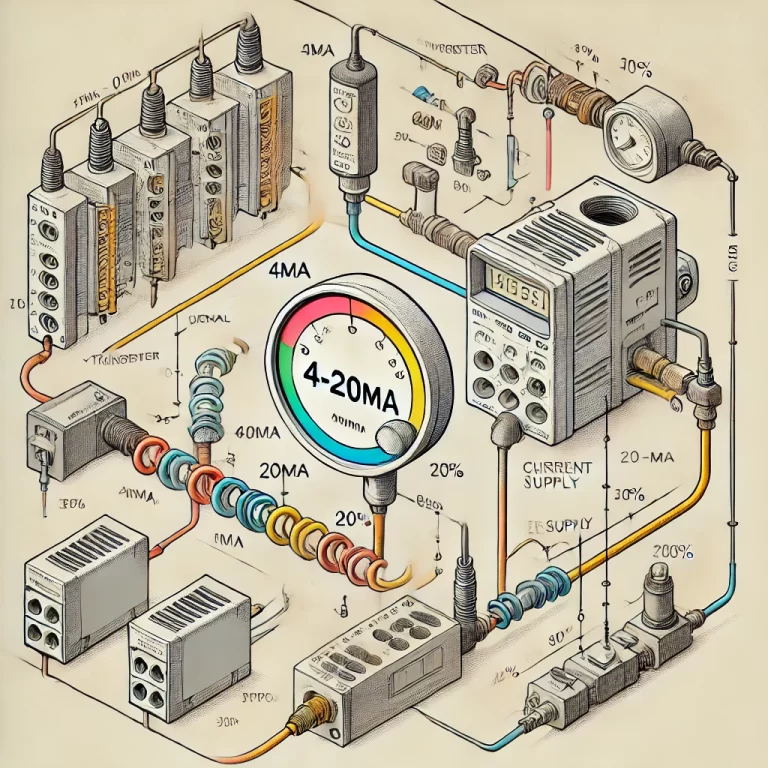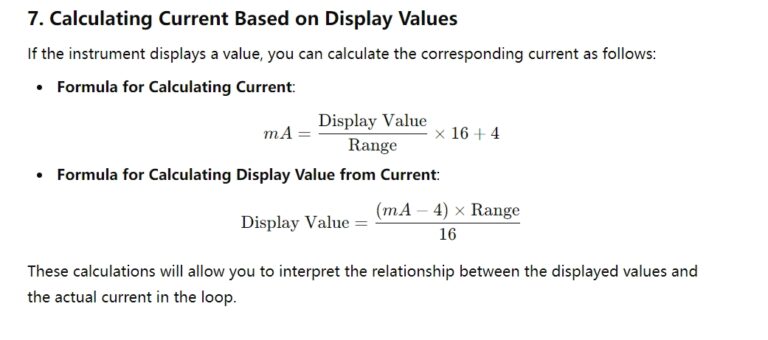When troubleshooting a 4-20mA loop disconnection, it is essential to follow a systematic approach. The following sections outline the primary diagnostic methods that instrument technicians should be familiar with:
1. Visual Inspection
Inspect the Cables: Check the cables in the loop for any visible damage, fractures, aging, or corrosion. Pay particular attention to areas where wires are connected, such as terminals, to ensure there is no looseness or disconnection.
Inspect Instrumentation: Examine the exterior of instruments, such as transmitters and controllers, for any visible damage. Ensure the display screen is functioning properly and that the power indicator light is illuminated, indicating normal operation.

2. Power Supply Check
Measure the Power Supply Voltage: Use a digital multimeter set to DC voltage mode to measure the output voltage of the power supply in the loop. The voltage should typically be around 24V DC, and it must be within the specified range.
Inspect the Power Supply Module: Check if the power supply module is showing any fault indicators. If necessary, replace the power supply module to determine whether the issue lies with the power source.
3. Signal Measurement
Measure the Current: Use a digital multimeter set to DC current mode to measure the current at appropriate points in the loop, such as at the transmitter output or controller input. Under normal conditions, the current should range from 4 to 20mA. If the reading is 0mA, it may indicate a disconnection.
Segmental Measurement: Divide the loop into several sections and measure the current in each segment to pinpoint the location of the disconnection. Start by measuring the current at the transmitter output, then move to intermediate junction boxes, progressively narrowing down the potential fault area.

4. Loop Resistance Check
Measure Total Loop Resistance: With the power supply turned off, use a multimeter set to resistance mode to measure the total resistance of the loop. A normal loop resistance should fall within the specified range. If the resistance is infinite, this suggests an open circuit, confirming the disconnection.
Measure Component Resistance: Measure the resistance of individual components in the loop, including the transmitter, load resistors, and connecting wires, to identify any internal faults or disconnections in the components.
5. Substitution Method
Substitute Instruments: If you suspect that a particular instrument is malfunctioning, replace it with a known good one of the same model. If the loop returns to normal operation, it indicates that the original instrument was the source of the fault.
Replace Cables: If you suspect the wiring could be faulty, replace the cables with new ones to see if this resolves the issue.

6. Communication Check
Verify Communication Protocols: Ensure that the communication protocol settings of the instruments are correct and that they match with the control system. Incorrect settings can lead to communication failures.
Check Communication Status: Use the control system or relevant software to monitor the communication status of the instruments. Look for any error messages or alarm indicators that might suggest issues with data transmission.

